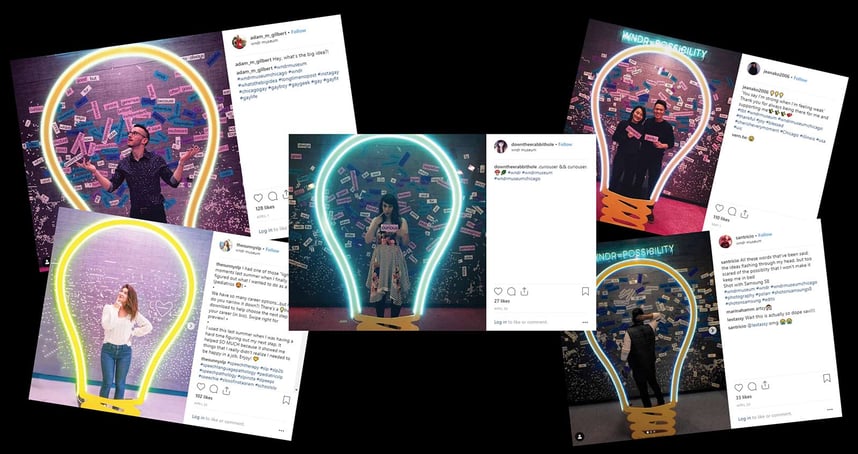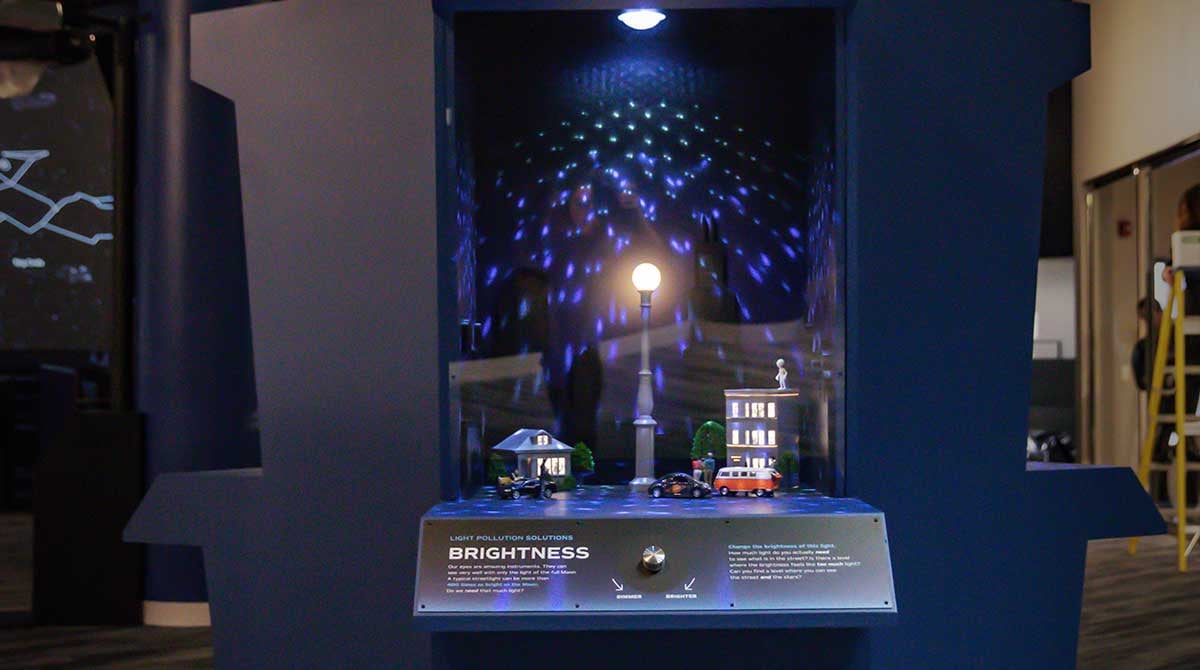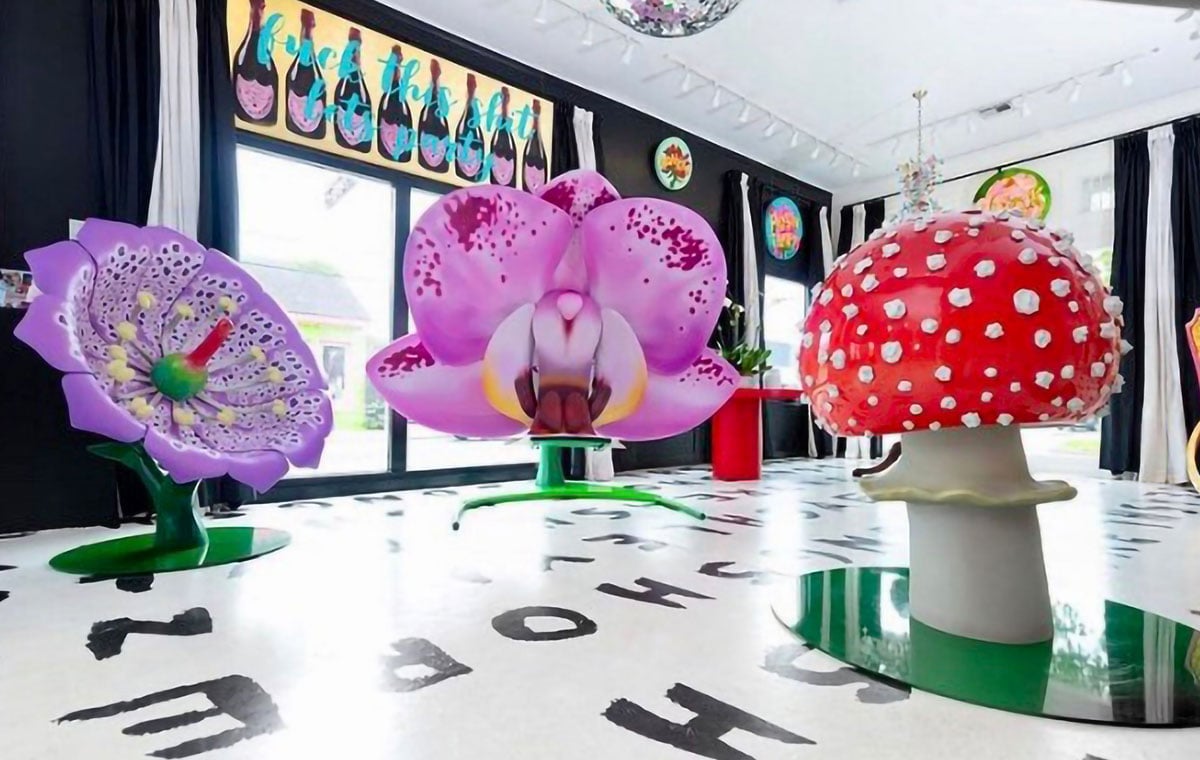Interactive art installations allow artists to connect with audiences in a truly unique way. While traditional art is meant to be observed, interactive art installations turn viewers into participants in multi-sensory, three-dimensional experiences. However, bringing an interactive art piece out of an artist's mind and into the real world is often complex.
Because of their hands-on nature, interactive art installations present unique challenges in for design and production. Artists often partner with experienced design and fabrication companies who understand these challenges, so they can faithfully execute their vision and avoid costly mistakes, project delays, and logistical issues.
In this article, discover the factors that make designing and fabricating interactive art installations a team effort and the best practices every interactive art exhibit project should follow.

What Are Interactive Art Installations?
Interactive art installations are significant undertakings both for the artists who conceptualize them and the teams that build and install them. Like other installation art, interactive installation art may include two-dimensional pieces and three-dimensional objects created using various media, as well as audio, video, and other elements to create a unified, immersive experience for audiences.
But interactive installation art takes the experience a step further than other art installations. Often spanning large spaces and incorporating multimedia effects, interactive art installations immerse observers and prompt them to respond to the built environment around them.

An interactive exhibit at the WNDR Museum in Chicago was designed to create immersive environments in which visitors could take selfies and share them on social media.
The addition of physical interactions between spectators and artwork adds additional layers of engagement to the visitor experience, and complexity to the work’s design and fabrication.
Many artists enlist the help of experts in engineering, electronics and sculptural design and fabrication to help them fully realize concepts—and to ensure installations function properly and stand up to repeated audience interaction.
Best Practices for Designing and Fabricating an Interactive Art Installation
Interactive art installations may incorporate moving parts, built using simple machines; or they may require complex electronics integrations. They may utilize a wide range of materials, finishes, and fabrication processes. They may require advanced engineering to ensure safety and stability. When design and fabrication teams work with artists to create art installations, they assume responsibility for all of the above. Their role as creative problem solvers is to deliver quality, durability, functionality, and more—on time, on budget—without compromising the artist’s original vision.
How do the best interactive art installation experts do it? With a well-defined process and a multi-disciplinary skill set that allows them to anticipate and solve potential challenges at every step. It all starts with a collaborative approach to planning.
Next, a design team will work with the artist to ensure the desired result is feasible, select optimal materials, and visualize digital and/or physical prototypes—all to set the fabrication process up for success before any building begins.

An interactive installation at Adler Planetarium demonstrates the effect of environmental light on our ability to view stars. It began with extensive planning, design visualization, and prototyping.
The fabrication process often includes digital methods, such as CNC cutting and 3D printing, as well as traditional carpentry and other work performed by hand. With a solid design plan, the artist’s vision will be faithfully executed through multiple stages of construction, refinement, and finishing.
This attention to detail must then continue through to on-site installation, where logistics, safety, and timing are of the utmost importance.
As you can see, a lot goes into bringing an idea from the mind of an artist to the audiences it will ultimately engage. When planning an interactive art installation, the best advice is to partner with an experienced design and fabrication team as early as possible—and to follow best practices, such as the following:
- Always choose durable materials.
Interactive art installations must stand up to repeated (and not always gentle) use by audiences. While cheaper materials may appear budget-friendly, if they lead to unexpected repairs or downtime, the success of your installation may be compromised. - Plan for consumables.
Identify any materials that will be consumed by your installation, or that will need to be replenished regularly. Ensure that these consumables can be easily and affordably replaced. Your design and fabrication partners can be a great resource here. - Incorporate easy access to interior components.
This includes moving parts, electronic components and pieces that may wear out or need to be replaced. Don’t permanently seal off parts that may require visual and/or physical access. - Build and test prototypes.
This includes all interactive components and multi-step interactions. Conduct function, endurance and volume testing to make sure you won’t disappoint visitor one or visitor one thousand and one. - Provide instructions.
Document the materials used to create each interactive element and the instructions for repairing or replacing them. This can be a lifesaver during an art exhibition and will allow you to extend the life of your work even after the relationship with your fabrication team ends. - Prioritize safety.
Evaluate the entire installation with the physical safety of spectators and participants in mind. Unlike an installation protected by a velvet rope or glass wall, interactive pieces are accessible to everyone who enters the space. This may include children as well as adults.

Set Your Next Interactive Art Installation Up for Success
Modern tools and technology allow artists to share their creations with audiences in a way that engages the senses and invites participation in an immersive, one-of-a-kind experience. A well-planned and well-executed interactive art installation is also one that is efficient to produce, safe, and durable—all without compromising the artist’s vision.
To find out how a full-service design and fabrication company can support your journey from ideation to installation, schedule a no-obligation strategy session with Bridgewater Studio today. Our multi-faceted team of designers, engineers, fabricators, and finishers has helped artists bring their creative visions to life in commercial spaces, art studios, hospitality environments, and public spaces.


.png)
.png)
.png)







